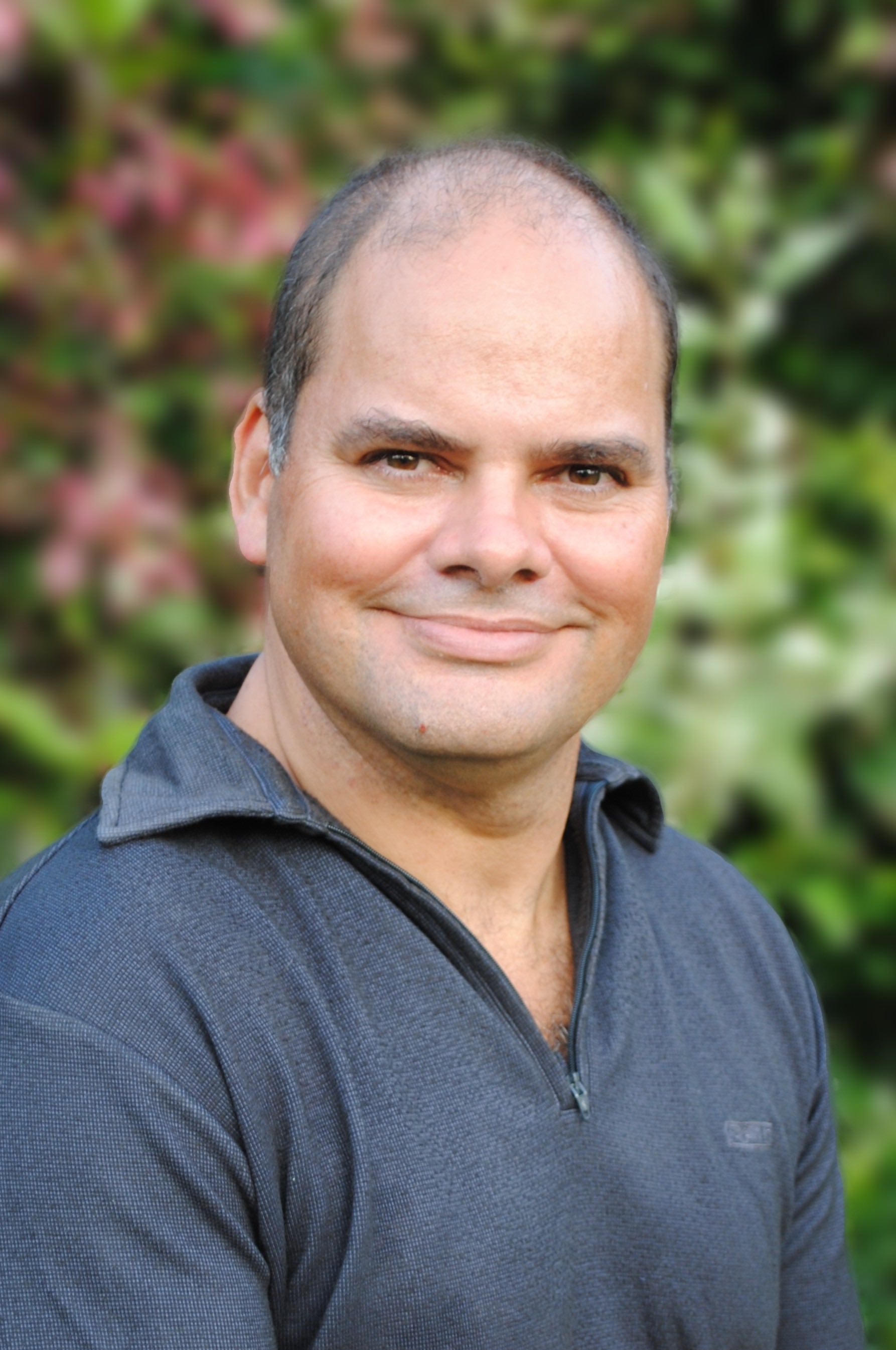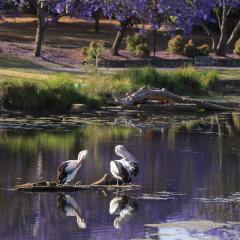How a distinctive Aussie architect has built a career pursuing his passions
By Marc Barnbaum
Andrew Lane is recognised as one of Australia’s few Indigenous architects, but his life journey also includes plenty of other distinctive aspects.
The UQ graduate (Bachelor of Architecture '97) certainly has plenty of conversation starters, ranging from bunkering in a bathroom during Cyclone Tracy, to motorcycle racing against former Moto GP World Champion Mick Doohan.
He’s also been an Air Force Cadets instructor, tree lopper, gas pumper, and traveller to many remote parts of Australia over the past four decades.
Andrew even managed to bring together two of his greatest passions on one stage by presenting a TEDx talk in Cairns on ‘What motorcycle racing taught me about architecture’.
With a racing bike in front of a screen showing building designs, he explained how “a thing of beauty is a thing of beauty whether it has two wheels or four storeys”.
“However, beauty in the object for beauty’s sake is not enough… motorcycle racing taught me that a design that does not meet the functionality of the purpose is as useless as an ashtray on a motorcycle.”
Andrew was interested in architecture early in life but school results initially steered him away from university and into the public service, with a job at the Australian Tax Office.
Seeking new challenges, he explored his options for entry to UQ, working closely with its Aboriginal and Torres Strait Islander Studies Unit.
Andrew’s hard work and persistence have led to a qualification that has come to define his personal and professional life, as well as his view of the world.
“I can’t count the number of times I have stood in a place of remarkable beauty on a work trip and said, ‘I really like my job’," he said.
"It might be the tropical beauty of an island off the coast of Queensland, or the rugged beauty of the central desert. But it’s not the destination I wish to share; it’s the journey.
“In some places, you do get dirt on your boots and flies in your eyes, and it's an in-your-face experience of the gap between living in a remote community and the urban lifestyle of most city dwellers.”
While studying at UQ, Andrew worked for the Aboriginal and Torres Strait Islander Housing Design Unit, where he contributed to projects for the Aboriginal Rental Housing Program.
“I designed houses for use in the Torres Strait, Far North Queensland, Western Queensland and South East Queensland. Following my graduation in 1997, I was asked to take over the management of the Design Unit.”
It was while working for the Housing Design Unit that Andrew met his wife Francoise, a talented interior designer who has Torres Strait Islander heritage. They now have three children.
At first their careers blossomed in parallel, but in 2011 they decided to create a unique partnership in the form of an architectural and interior design practice – Indij Design – based at Gordonvale near Cairns.
The business has gone from strength to strength, with the latest project being a $6 million Indigenous health clinic in Atherton.
Before starting Indij Design with Francoise, Andrew worked on many different building projects around Australia.
In Alice Springs, he project managed the installation of solar-power systems for very remote outstations and developed concepts for the Yuendumu Art Centre extension while working for the Centre for Appropriate Technology (CAT).

He also contributed to the master planning of a community hub for Lockhart River while working for Arup.
Andrew’s role as Program Manager for Arup required him to travel to many remote Indigenous and non-Indigenous communities across Queensland. His responsibilities included managing multi-million-dollar housing and infrastructure projects.
The talented professional became a member of the Royal Australian Institute of Architects (RAIA) Indigenous Housing Taskforce and was one of the coordinators of the 'Which Way' National Indigenous Housing Conference held in Alice Springs in 2007.
Andrew has earned his stripes as an architect, but he believes his Indigenous heritage has also been a strong asset to bring to the table, in terms of communication and affinity with each community’s social and cultural imperatives.
In 2011, Indij Design was engaged by Cairns Regional Council (CRC) as the advising Indigenous architect to the Cairns Entertainment Precinct architectural design team. This involved developing a culturally appropriate engagement strategy that required establishing contacts and communication channels within Nation and Clan groups throughout the local government area of the CRC.
“When communities recognise you are an Indigenous person, I honestly think they do have a slightly different attitude towards you,” he says.
“It just changes the conversation for an Indigenous professional to be involved in a project … communities appreciate that."
“It is also our firm belief that spaces for public use can be enhanced when we recognise and embed into the built form the historical significance of that place and how that connection to country of the traditional custodians or owners continues today. This is what we describe as ‘Reconciliation through Architecture’.”
During his career, Andrew has been involved with houses, community stores, art centres, subdivisions, water infrastructure, solar power systems, learning centres and health clinics. Budgets have ranged from $65,000 to $39 million, working across the length and breadth of Australia in urban, rural and remote locations.

“Working remotely means getting on a plane or driving for hundreds of kilometres,” he says.
“Some may find it exciting to fly to work, but the novelty of sitting for two to three hours in a twin-engine aircraft at 10,000 feet does wear off. I have done day trips from Cairns to Burketown where I leave home at 5.30am, returning more than 15 hours later at 9pm.”
Another day saw him have breakfast in Gordonvale, lunch in Birdsville and dinner in Mt Isa.
“There are many destinations where infrastructure such as hire cars simply doesn’t exist and you rely on the community or the contractor to get around," he says.
“On the plus side, there’s also the community people you meet. Tenants, housing officers, CEOs, council employees, CDEP workers, the list goes on.
"These are the people actually living in the communities, who have to deal with the issues of distance from services, with government agencies and, often, with just trying to survive. These are the people we work for.
“As with all communities populated by individuals, they each have their own stories and reasons for being where they are.
“The career I have chosen and the opportunities that have been presented to me have enriched my life through the community people I have met, the professional people I have worked with and the landscapes I have experienced.”



